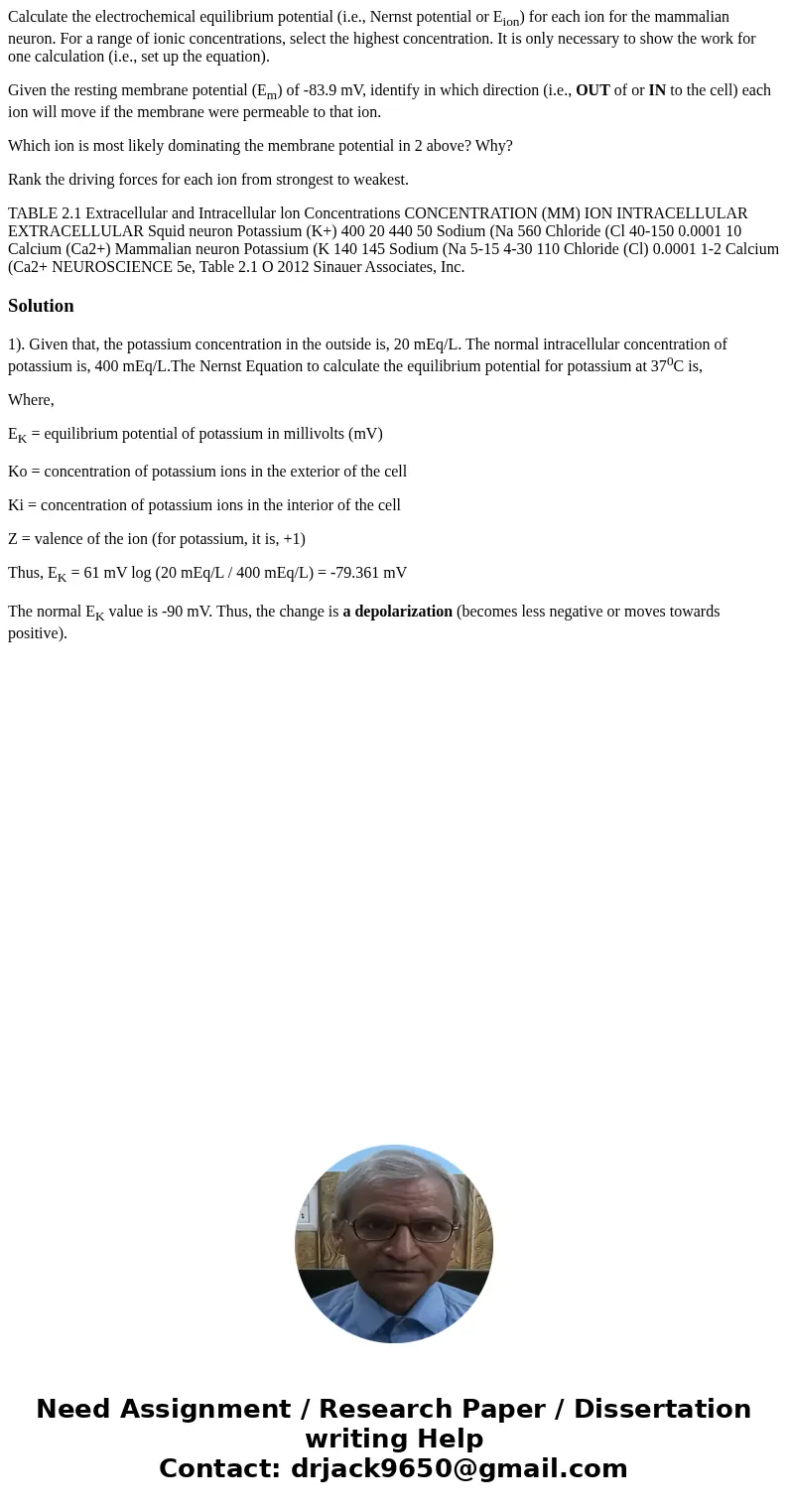Calculate the electrochemical equilibrium potential ie Nerns
Calculate the electrochemical equilibrium potential (i.e., Nernst potential or Eion) for each ion for the mammalian neuron. For a range of ionic concentrations, select the highest concentration. It is only necessary to show the work for one calculation (i.e., set up the equation).
Given the resting membrane potential (Em) of -83.9 mV, identify in which direction (i.e., OUT of or IN to the cell) each ion will move if the membrane were permeable to that ion.
Which ion is most likely dominating the membrane potential in 2 above? Why?
Rank the driving forces for each ion from strongest to weakest.
TABLE 2.1 Extracellular and Intracellular lon Concentrations CONCENTRATION (MM) ION INTRACELLULAR EXTRACELLULAR Squid neuron Potassium (K+) 400 20 440 50 Sodium (Na 560 Chloride (Cl 40-150 0.0001 10 Calcium (Ca2+) Mammalian neuron Potassium (K 140 145 Sodium (Na 5-15 4-30 110 Chloride (Cl) 0.0001 1-2 Calcium (Ca2+ NEUROSCIENCE 5e, Table 2.1 O 2012 Sinauer Associates, Inc.Solution
1). Given that, the potassium concentration in the outside is, 20 mEq/L. The normal intracellular concentration of potassium is, 400 mEq/L.The Nernst Equation to calculate the equilibrium potential for potassium at 370C is,
Where,
EK = equilibrium potential of potassium in millivolts (mV)
Ko = concentration of potassium ions in the exterior of the cell
Ki = concentration of potassium ions in the interior of the cell
Z = valence of the ion (for potassium, it is, +1)
Thus, EK = 61 mV log (20 mEq/L / 400 mEq/L) = -79.361 mV
The normal EK value is -90 mV. Thus, the change is a depolarization (becomes less negative or moves towards positive).

 Homework Sourse
Homework Sourse